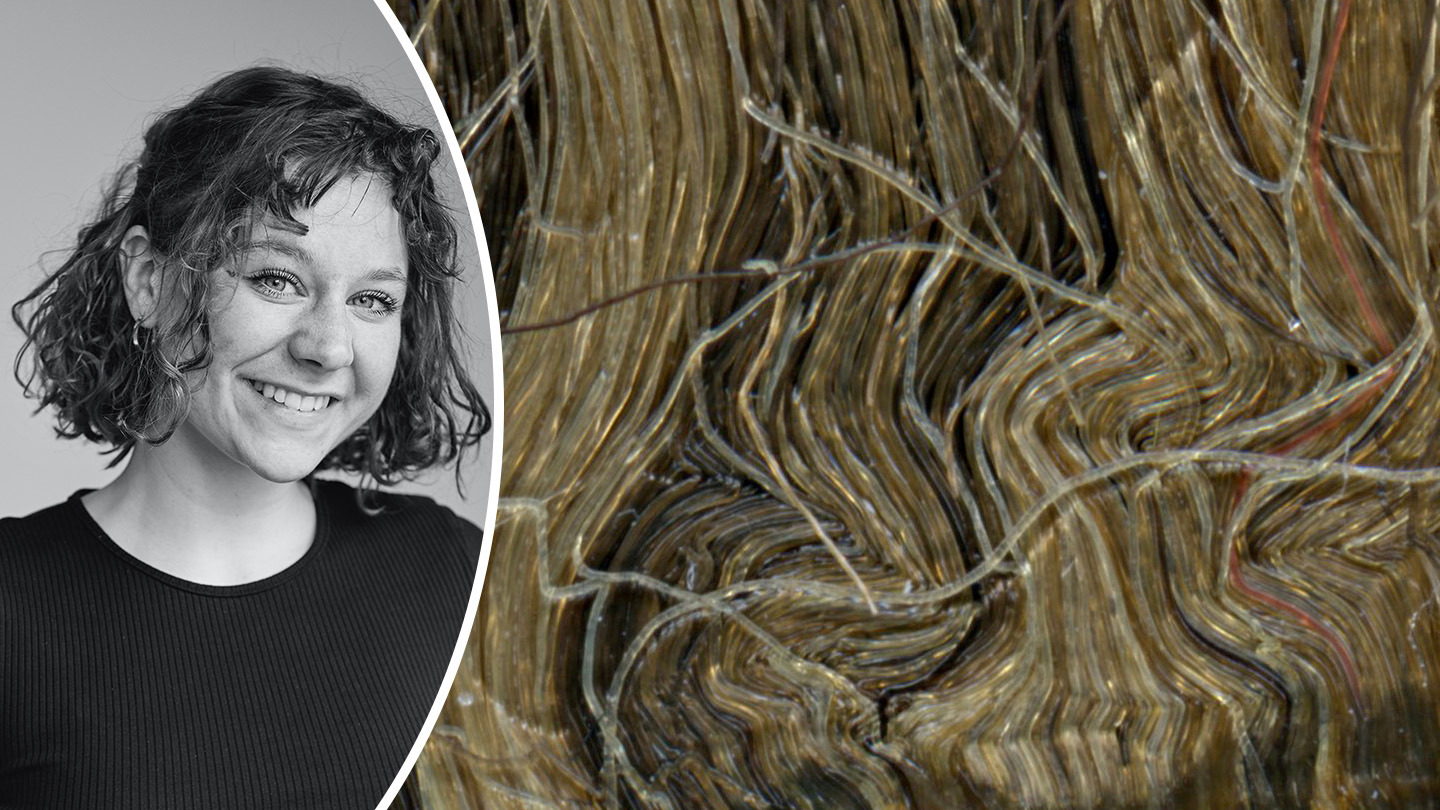“Sustainable development should be essential”
2020-12-21

Romy Kaiser’s thesis explores the area of material-driven design based on human hair as a renewable resource. Her starting point was questioning the distribution of consumer and producer roles in our current systems and attempts to reverse it. That led to the research question of how humans can contribute to renewable resources.
“In a chemical perspective, our human facets are part of nature as well – so why don’t we build our systems like that? That was when my fascination for keratin-based materials like human hair, what is currently seen as waste material, started,” she explains.
“I have realised that if we want to live in circularity in the future, mankind has to change its mindset. I wanted to show that our current bias can be overcome, and wonderful possibilities are opening up when transferring this point of view also to materiality – with the help of textiles, aesthetics, and science as a tool. Which then has led to transforming hair waste into something fascinating.”
“The project is challenging our self-perception by separating ethics from material values by looking at it with a chemical lens. That draws us back to the fundamental questions of life, the relationship to our surroundings, and what we, our bodies, our used materials actually are – and what we want them to be.”
What does sustainable development mean to you, and why is it important?
“I think we should not see it just as something “important.” I truly believe it should be essential. I would like to see a sustainable approach be the norm, and already implemented at the beginning of an idea – with the mindset that this is impacting all actions and decisions humans are taking – individually but also as a collective.”
What does the award mean to you?
“Receiving this award was a great surprise! It is brilliant to see people believe that my research creates impact towards a more sustainable future. I am definitely honoured as well as encouraged that it is a promising way to continue researching in the direction of biomaterials, especially with a multidisciplinary perspective.”
What tips do you have to other students who are about to start their final thesis project in relation to sustainable development?
“As we are in need for new approaches towards a more sustainably living: go ahead, use the setting of the university to be bold and think differently! But I would like even more to address students starting their final thesis project without any sustainable ideas in mind. Ask yourself these questions: How would I like to live in 20 years? How does my work contribute to this vision? Think holistically.“
Read more
The grant was announced at the university’s annual celebration “Days of Knowledge” on 1 December 2020.
Romy Kaiser’s final thesis is titled “Kera-Plast: Exploring the plasticization of keratin-based fibers through compression molded human hair in relation to textile design methods”.
The motivation for the grant:
“Romy Franziska Kaiser brings a new perspective on material consumption by challenging the current social norms of material acceptance, and ways of utilising materials in textile design and design in general. Romy’s thesis explores the area of material-driven design based on human hair as renewable resource, with the aim to currently disrupt existing norms of circularity, use, and aesthetics. Moreover, her thesis addresses complex aspects regarding the circularity of material and product design processes and focuses on the environmental challenges today. The use of advanced textiles techniques and high textile design skills are joined in her research to revitalise forgotten methods and craft skills. The inspiring series of materials designed together with a deep reflective written analysis of the methods developed with respect to design for circularity and craftsmanship set a new material context in design (Goal 12, Agenda 2030). The thesis systematically introduces through a theoretical and experimental approach a cutting-edge textile perspective on material origin, function, and re-use with the aim of reducing in design and production the environmental impact of textile materials (Goal 13, Agenda 2030).”
Solveig Klug
Private

